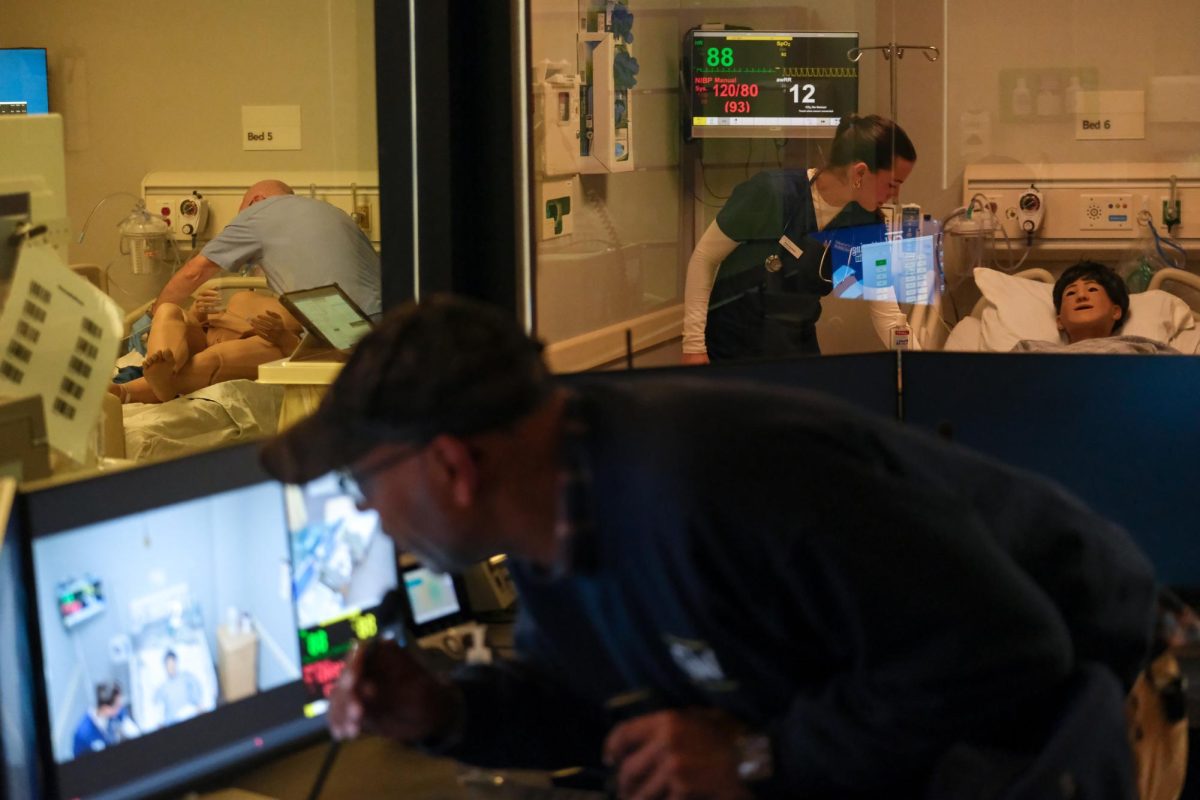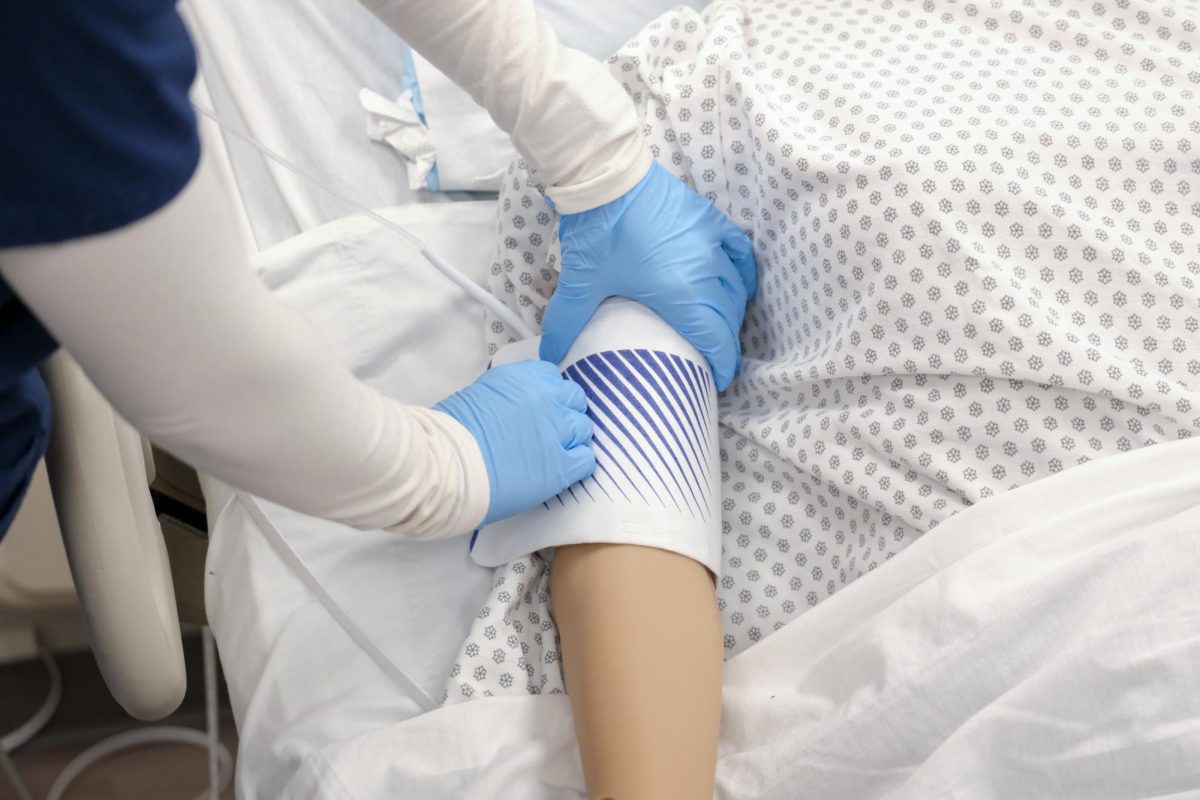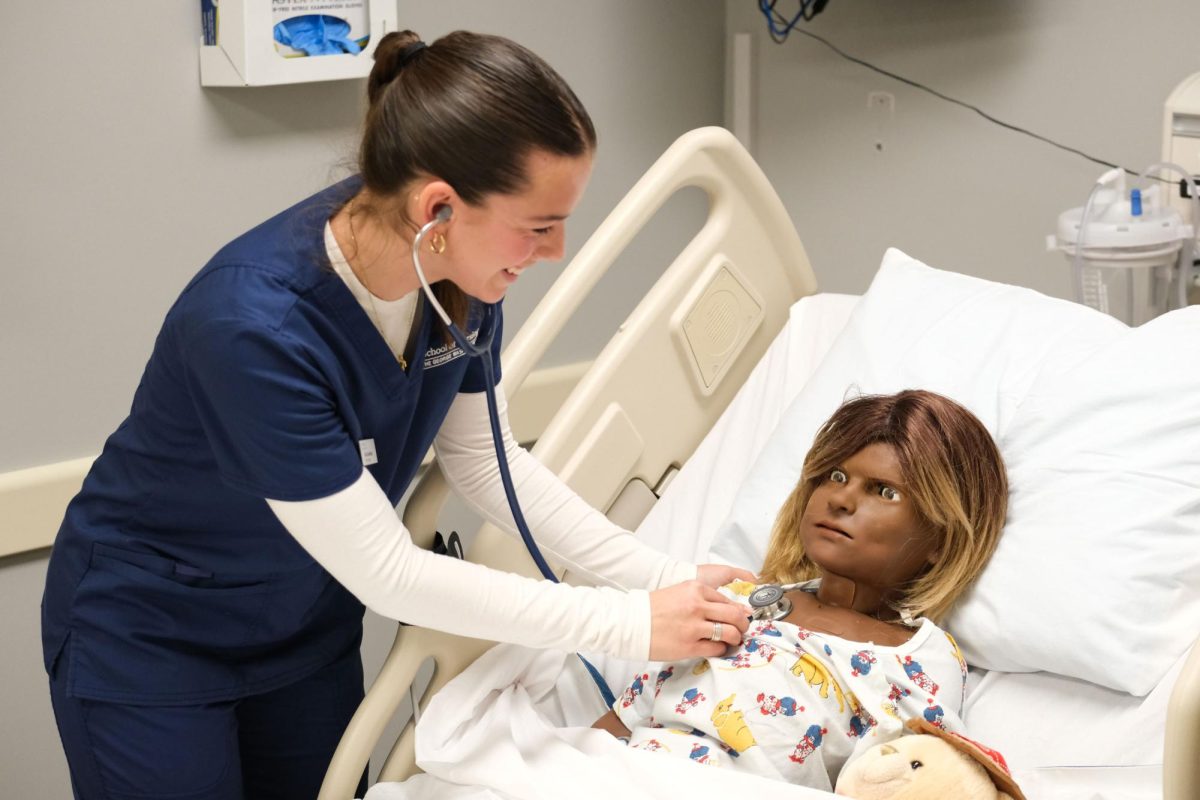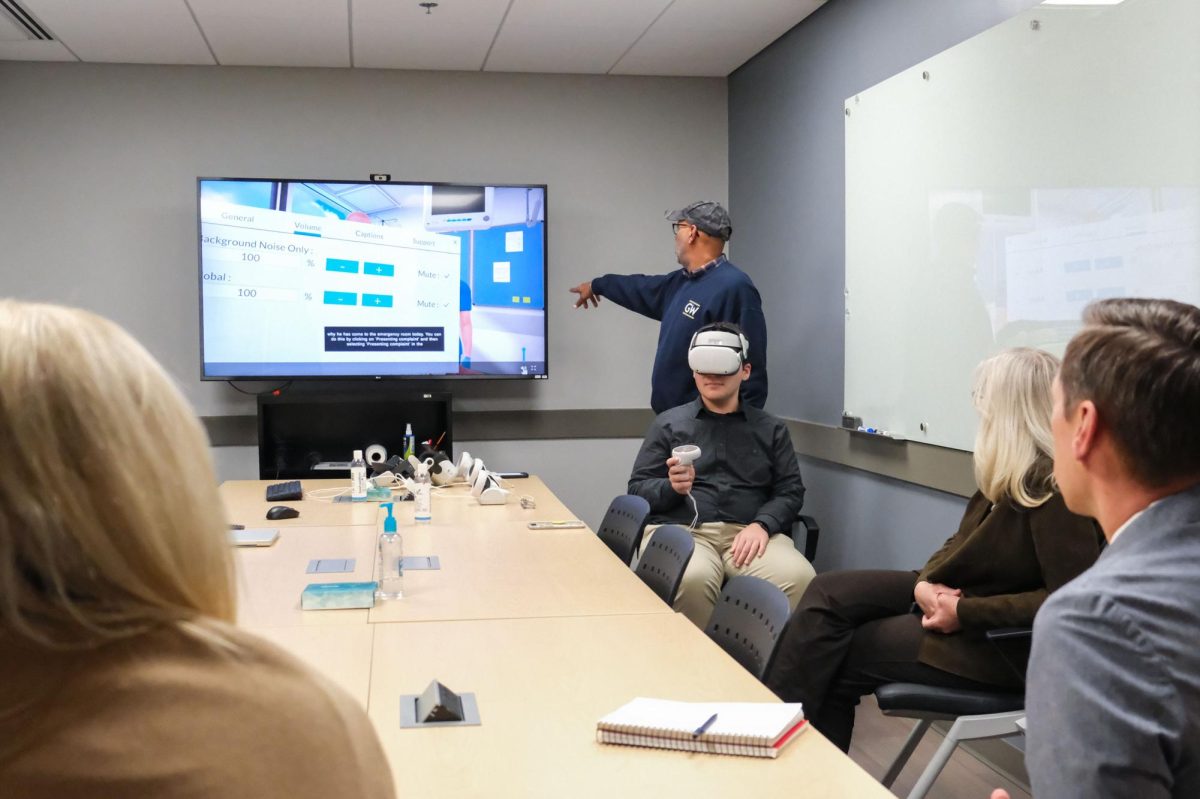Updated: Nov. 18, 2024, at 10:20 a.m.
The School of Nursing added virtual reality features to its Simulation and Innovation Learning Center this semester after years of planning.
Faculty involved in the center on the Virginia Science and Technology Campus in Ashburn, Virginia, said they introduced 20 Oculus virtual reality headsets to the center, which students will use to practice nursing in an additional simulated clinical environment to the physical simulation center during their third semester of the nursing bachelor’s program. Faculty and students who work in and with the center said the additions give faculty more options to allow students to learn in different environments as they prepare to enter the nursing field.
Crystel Farina, the associate dean of Bachelor of Science in Nursing programs, said the school decided to add a virtual reality component to its simulation lab after she attended the International Meeting for Simulation in Healthcare several years ago. She said vendors at the conference were demonstrating virtual reality simulation software that focused on student learning and critical thinking rather than simulations that looked like a “game.”
She said the school began its efforts in virtual reality when former Dean of the School of Nursing Pamela Jeffries decided to build a virtual reality room at Innovation Hall, the school’s headquarters on the VSTC before the pandemic. Farina said the school piloted the virtual reality simulations with a group of students over the summer and it worked “beautifully,” so faculty and officials introduced it into the school’s curriculum this semester.
“The whole key is to expose our students to a variety of different patients and different patient settings, so they can gain that confidence in communication and critical thinking and patient centered care,” Farina said.

Of GW’s nine peer schools with a nursing school or program, only Wake Forest University and the University of Rochester also had virtual reality simulation experiences.
Chris Thomas, the director of simulation and experiential learning, said during the third semester, half of the students’ simulation sessions will be in virtual reality and the other half will be in the physical simulation center over the course of 40 hours of simulation experience they receive in a semester.
Thomas said students in the simulation center learn how to perform tasks like interacting with patients, giving them medication and reacting to situations like patients’ blood pressure dropping. She said the simulation center offers students the opportunity to learn how to make decisions in real time while doing so correctly and safely without the risk of impacting real-life patients.
Thomas said the simulation center is currently using “prepackaged” simulations, but they are working with AccessVR, a virtual reality immersive learning production company, to design their own simulations that are customizable to the school’s curriculum.
“As they’re learning now, they have that experience that they can apply, and then the next episode with a real patient,” Thomas said. “They’re making decisions in real time, they’re incorporating and multitasking with the psychomotor and the communication and the decision-making.”
When students enter the virtual simulation, they see a patient in a medical room who directly communicates with them throughout the simulation and responds to the student administering treatment to them. The simulation features a number of objects ranging from medical equipment to a computer that students can click on to perform actions based on what’s required of them in that situation, like clicking on the patient to ask them a question, on equipment used to take the patient’s heart rate or perform a test or on the phone to make a prescription order.
In the physical simulation center, students treat a mannequin while a faculty member sits in a control center following a script and controlling the simulation by changing the patient’s vitals, playing sound effects like a patient coughing and talking to students as the patient. Students must then respond to the situation by performing actions directly on the mannequin.

Farina said the simulation component to the school’s curriculum began in the early days of the school’s founding in 2010. She said when Jeffries became the dean in 2015 the school redesigned and rebuilt the simulation learning center due to Jeffries’s background in simulation education, or using realistic scenarios to help students practice skills, including creating her own academic theory around it.
“All of it comes from her philosophy and her theory on simulation and nursing education and how important it is for students to practice providing care before they actually do it,” Farina said.
Diana Lora, a clinical instructor in nursing, said classes at the school are structured to have a didactic or lecture section as well as a lab section and a simulation section. She said as a didactic instructor, she works closely with the lab and simulation instructors so students can build on what they are learning in each of the sections.
“In didactic, we teach them the theoretical. In lab, they get to play with some of those theoretical stuff, like some of the tools,” Lora said. “But in simulation, they’re able to actually take those concepts and apply it, which is, I think, crucial for our nursing profession.”
Lora said faculty’s experiences in the clinical setting allow the instructors to modify syllabi and simulations each semester to better align with the skill students need in the field.
“Our offices are down the hall from each other, so we’ll touch base with content, what we would like to do better, things that we’re seeing,” Lora said.
Vivian Bowman, a dedicated simulation educator, said when students learn in their lab section about administering medication, their simulation sections that week focus on teaching students how to administer oral medication, muscular injections and IVs.
“The idea is that all three components are kind of in unison, and that they’re there to support each other, and it really helps with their learning because they’re going to didactic, they’re hearing about it now in simulation, they get to see it, and they get to do it,” Bowman said. “That’s when this experiential learning really comes into play and really helps them as learners and as future nurses.”
Bowman said the simulation lab is a great learning tool as it provides a “psychologically safe” learning environment for students as they can get nervous about doing the right thing and not harming the patient in a clinical setting.

“It’s that place where you can make mistakes, and you’re not going to harm the patient,” Bowman said. “But your mistakes are something you don’t get punished for, it’s a learning opportunity. We all make mistakes, and watching somebody else make a mistake is a learning opportunity for everyone.”
Ariela Zweiback, an accelerated bachelor’s student, said the simulation lab has been the most “formative” experience of her education at the school. She said the simulation lab has provided a realistic setting to learn as she came into nursing school with very little clinical experience.
“It’s a super healthy learning environment, you feel really comfortable making mistakes because we’re not hurting real patients,” Zweiback said. “We spend a lot of time discussing what we should do moving forward with a case and what we could have done better.”
Zweiback said she is excited to use the virtual reality simulation because she will be able to learn on her own in the virtual simulation as they have a partner during the physical simulation.
“I could imagine that it would be really helpful in being fully immersed in that sort of environment on your own because in our first semester, we do simulation in partners, so there’s another student nurse there to kind of bounce off and develop that team working skills, so learning more on your own feet in that VR simulation,” Zweiback said.
This post was updated to correct the following:
A previous version of this post misspelled Crystel Farina’s name. We regret this error.





